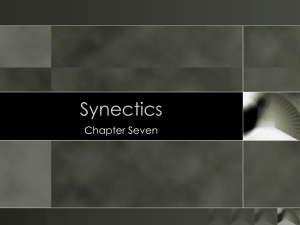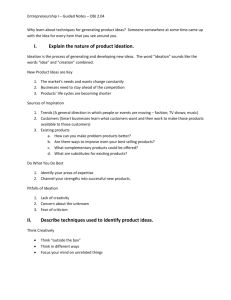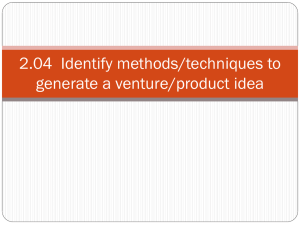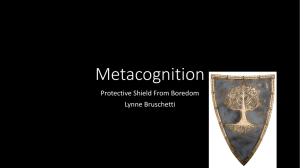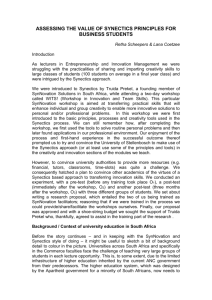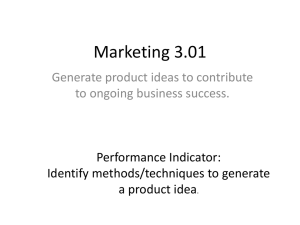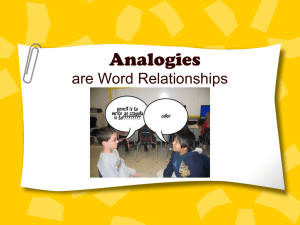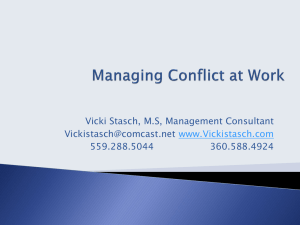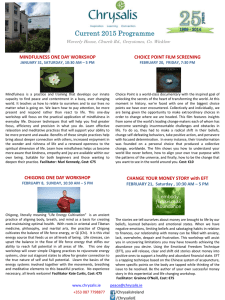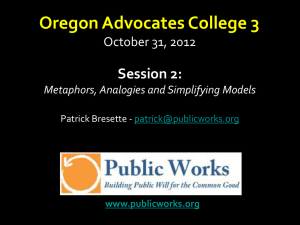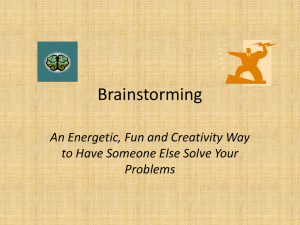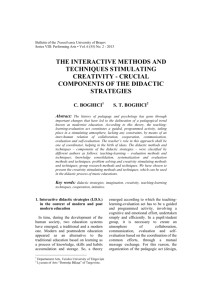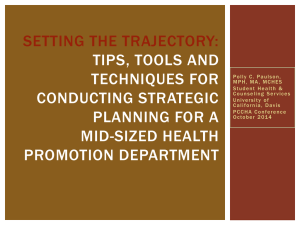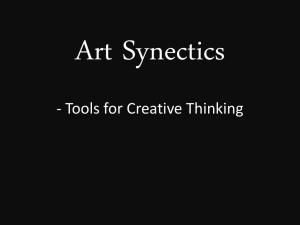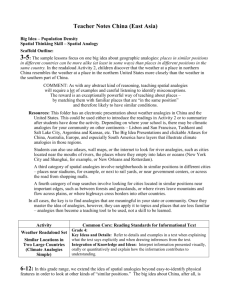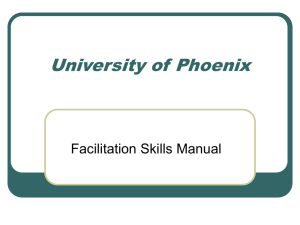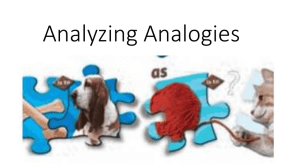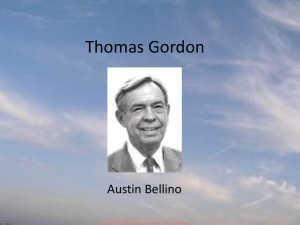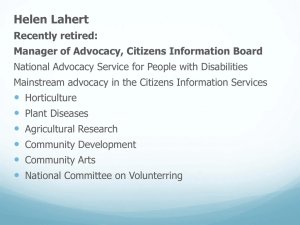Synectics-introduction
advertisement
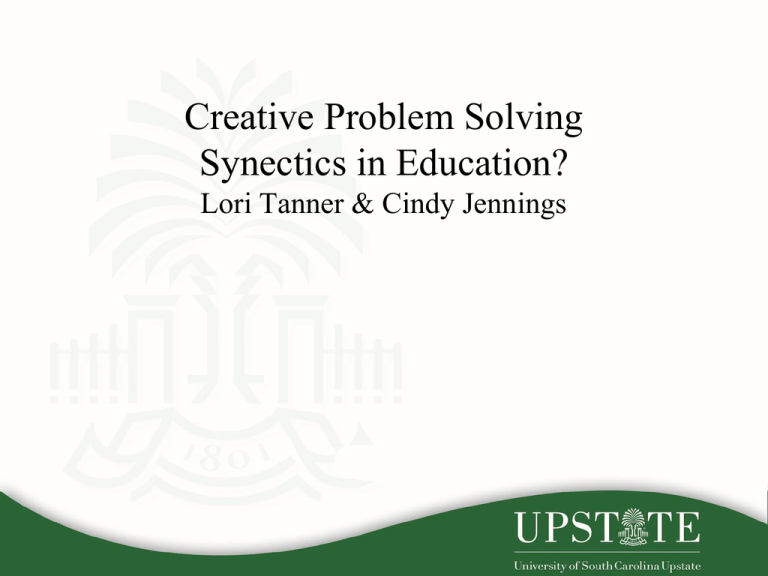
Creative Problem Solving Synectics in Education? Lori Tanner & Cindy Jennings • If knowledge can create problems, it is not through ignorance that we can solve them. • Isaac Asimov • Ultimate solutions to problems are rational, the process of finding them is not • William Gordon • Strange words simply puzzle us; ordinary words convey only what we know already. It is from metaphor that we can best get hold of something fresh. • Aristotle Synectics-Ahh What? • syn-ec•tics \ si-'nek-tiks \ noun: • Greek roots : diverse elements together • A theory or system of problem-stating and problem-solution based on creative thinking that involves free use of metaphor and analogy in informal interchange within a carefully selected group of individuals of diverse personality and areas of specialization. History of Synectics • Break off from Arthur D Little (high tech consulting firm) & MIT Inventors on Demand – William Gordon – George Prince • R&D • Problem solving Gordon’s Assumptions • Creativity is important in everyday activities • Process of creating is not mysterious • Creative invention is the same in all fields • Creative thinking and invention are similar • The emotional component of creativity is often more important than the intellectual; the irrational more important than the rational Blocks to Creativity • One right answer • Not logical • Rules • Practical • Concise • A whack on the side of the head! Creative Problem Solving • Climate that invites speculative thinking safe from criticism or punishment • Methodology that stimulates ideas Task Idea Development • Creative thinking Synectics Principles • Make the strange familiar • Make the familiar strange Synectics Technology of Brainstorming • Metaphors • Analogies • Compressed conflicts • Thinking-Outside-The box Facilitator/Group Dynamics • Facilitator distance from topic/problem • Hierarchy power issues • Heterogeneous group • Environment comfortable • Irrational, impossible, ridiculous, outrageous, illegal, immoral, insane ALL valued in the process Basic Steps 1. 2. 3. 4. 5. 6. Describe topic/problem Create direct analogies Describe personal analogies Identify compressed conflicts Create new direct analogy Reexamine original topic/problem Stretching Exercises • How is a car like the earth? • How is a computer keyboard like Jello? • If the ocean were a sea of professors, what would the foam be? More Mind Exercise • What does it feel like to be a 1971 Britannica Encyclopedia S ? Come on…Get out of the box! • Know anyone who is an “exquisite irritant?” • How is an embargo like “vulnerable protection?” Challenges • • • • • Process is demanding Multiple steps Complicated Cumbersome Facilitator may not know the problem before the brainstorming sessions • Facilitator will not know the resulting solution(s) or creative ideas Benefits • • • • • New inventions Problem is solved Group commitment to idea Unique perspectives surface Creative thinking encouraged
